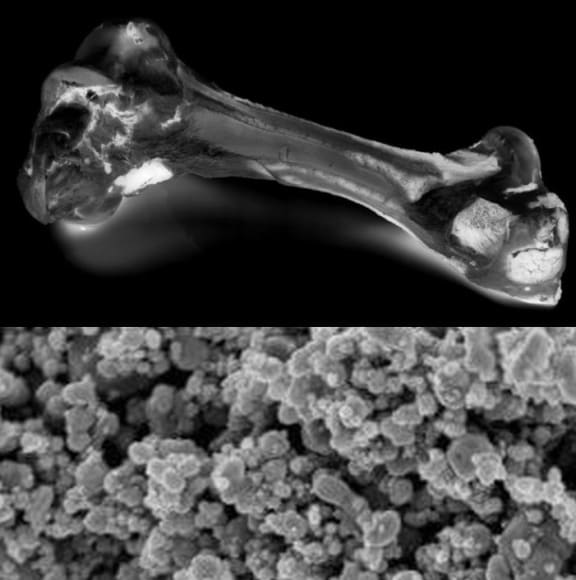
Combining beef bone with silver nanoparticles will create a unique bone xenotransplant material with antibacterial properties. Photo: Public domain
‘Silverbone’ is a University of Otago project to develop better bone grafting material that combines beef bone with silver nanoparticles for their anti-bacterial qualities.
The project received a one million dollar Endeavour research grant from the Ministry of Business, Innovation and Employment in 2016. it is a collaboration between dentist Warwick Duncan and chemist Carla Meledandri at the University of Otago, and Dunedin company Molteno Ophthalmics which produces high quality bone products for uses such as artifical eyes.
Warwick Duncan writes about the project that "bone grafting is often required when replacing damaged hip- and knee joints or replacing teeth that have been lost. Subsequent inflammatory disease around artificial joints or titanium dental implants or teeth may require additional bone grafting.
"Bone grafts may come from the patient themselves, which requires an additional surgical site and carries the risk of further complications.
"Alternatively, the surgeon may use artificial bone grafting substitutes. Bone graft substitutes are commonly sourced from animal bone, particularly treated beef bone, which is known as bovine bone xenograft, or BBX.
"Infection of the bone-grafted site is a frequent complication, and there are increasing problems with bacteria resistant to the antibiotics used to prevent or treat these infections. Metallic silver is an alternative approach to killing bacteria that avoids the problem of antibiotic resistance.
"Otago University has developed a nanoparticle medical technology that uses tiny particles of silver to prevent bacterial infection.
"Our new product SilverBone combines nano-silver with BBX grafts produced by a New Zealand firm from New Zealand beef bone, resulting in new bone grafting materials that are resistant to bacterial infection. These will encourage bone growth and repair when used in patients undergoing orthopaedic or oral surgical treatment."


